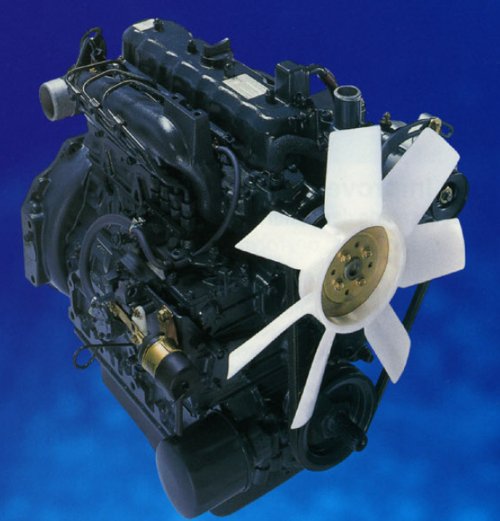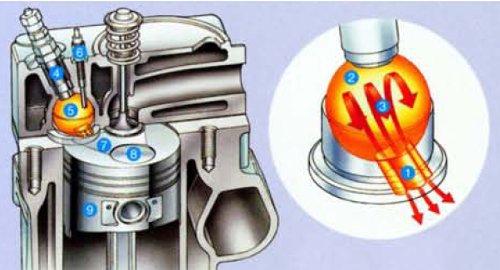Kubota’s Super Three Engine Series

An article the gives a quick overview of five engine models in Kubota’s Super Three series of engines. Kubota manufacturers these engines in their Tsukuba Japan facility and they are found on modern equipment.
Super Three Engines – Where They Fit In
Kubota’s Super Three engines are 3 and 4 cylinder engines that have an operating range of 2600-2800 rpm and outputs of 29 to 57 horsepower. They are liquid cooled and for the most part, naturally aspirated (only the V2003 is turbocharged). All Super Three engines have a “03” designation and are found on newer Kubota models as well as third-party equipment that Kubota supplies to (Bobcat, Skylift, track-hoes, etc).
On the lower power end, the “03” series overlaps a bit on the range of high revving Super “05” series but covers the 40+ horsepower range nicely until the larger, beefier, V3300 series takes over. Design of the Series Three engines began in 1990 and their production continues today.

Super Three engines, D1403, D1703, V1903, V2203 and V2003 cover the gap from the Super Five to the heavy-hitting V3300 engine models. Horsepower rating runs along the bottom of this chart.
Low Emissions
Kubota built these engines with low emission technology – the design of the engine lowers the intake temperature and creates a unique air/fuel vortex in the combustion chamber via a concaved recess on the piston head. The result is reduced emissions while still maintaining high output. This low emission engines were built, among other things, to meet the United States EPA’s requirements for lower emissions for agricultural equipment.

A cross-section of the combustion chamber of Kubota's Super Three engine. The fan-shaped concave recess, #7, causes the air/fuel mixture to swirl, #3, in a specific way that yields lower emissions.
This engine series, and the others that Kubota produces that are low emission, is something they are really proud of. Quoted from their industrial engine website:
The ability to produce engines that are capable of clearing all emission regulations is the Division’s driving force in producing advanced, high quality engines of the future.
I’m sure another, unspoken, driving force for the Division is the buckets of cash Kubota reels in from its engine division. They’ve got bills to pay like everyone else.
Engine Specifications
The table below shows layman specifications. For the complete set and for power band graphs, check here.
Kubota Super Three Engines
| Model | Cylinders | Displacement | Induction | Horsepower | Found On |
| D1403 | 3 | 1.4L | natural aspiration | 29 | L2800 |
| D1703 | 3 | 1.6L | natural aspiration | 35 | L35, L3240, L3430, L3400 |
| V1903 | 4 | 1.9L | natural aspiration | 40 | L3600 |
| V2203 | 4 | 2.2L | natural aspiration | 47 | L4240, L4330, L4400, L4630 |
| V2003 | 4 | 2.0L | turbo charged | 40.5 | L3940 |
Related Articles
A Look at Kubota’s Tsukuba Factory




